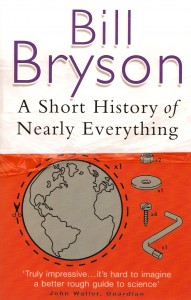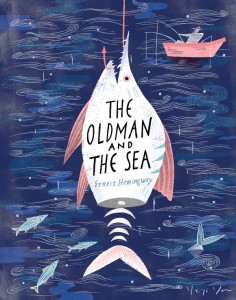Representation, representation, representation; what American student hasn’t been pelted with that word over and over again? The Revolution was fought for a lack of representation in Parliament. The Civil War was fought for a lack of representation for African Americans. Suffrage was fought for a lack of representation for women. We care about what stands for us, and we care about what our country stands for. We want the United States of America to represent good; good values, good people, good economies. Since the founding of our nation, one of our primary symbols for that sought-after status has been the American Dream. But does ‘the American Dream’ mean what it always meant? That definition fundamentally shapes how we view our country and its goals, and that understanding changes what people want out of their lives and what the government tries to give them. How this dream manifests itself profoundly affects our interactions with the world around us, and it is dangerous to assume that we completely understand and control this aspiration. It is always changing, always misunderstood, always just out of reach. If the American Dream is the ultimate goal we claim it to be, understanding what it is and how it changes is essential to understanding our own trajectory and fate in the world.
The American Dream has changed many times, but let’s focus on a particularly recent shift, because it is the most relevant. World War I spelled a sudden change in American perception of the world they lived in. They had witnessed people killing other people on a grand scale and had experienced shortages and loss in recent memory. While nothing compared to the difficulties coming in its sequel, the first World War gave the Americans a taste of hardship that was revolted against spectacularly in the interwar period. Out of that riotous quest for comfort was born F. Scott Fitzgerald’s The Great Gatsby: the ultimate symbol of money-loving, glory-seeking, party-going New York fame.
The Great Gatsby is a love story. Nick Carraway gets entangled in the romantic affair of his neighbor, Jay Gatsby, and Nick’s cousin, Daisy Fay Buchanan. Gatsby personifies a rags to riches story, clawing up the social ladder through the prosperous business of illegal alcohol. Daisy is frivolous, married, and old-money through and through. Naturally, it does not work out; Gatsby builds himself up from nothing so that he can deserve her, yet they are completely incompatible people. One of the main interpretations of this affair places Daisy as the American Dream and Gatsby as the citizen working tirelessly to achieve her.
The first description we get of Daisy is full of false promises. Nick describes her looking up to him in a way that “promis[ed] that there was no one in the world she so much wanted to see” (9), and giving the appearance of “a promise that she had done gay, exciting things just a while since and that there were gay, exciting things hovering in the next hour” (9). Both are entirely false statements. Nick and Daisy are not close, and the last thing she did was sit in a room for hours doing nothing and the next thing she’ll do is sit in another room for hours doing nothing. She is perceived as offering some exciting prospect which she does not truly offer. It is revealed even in her words. She explains that she has “‘been everywhere and seen everything and done everything’” (17), again not possibly true, but it is the feeling she gives off. It matches the picture of her as a dream to be chased–something exciting, both attainable and exalted, in store just for us.
Gatsby thinks his key to that dream is money. He was born into a poor German family that farms for a living in the Midwest. After falling in love with Daisy, the only way he knew how to become worthy of her was joining the social elite through wealth. Even Fitzgerald’s descriptions of color stick solely with money. Gatsby reaches for “a single green light” (21) on the end of Daisy’s dock from his own house. Why choose green if not for the specific color of our currency? And the only color descriptions from the first party Nick attends at Gatsby’s are gilded; the only food given a color is meat “bewitched dark gold” (40), the band plays “yellow cocktail music” (40), the only outfits described are “two girls in twin yellow dresses” (42), and even the people descriptions are narrowed to “Jordan’s slender golden arm” (43). It’s a golden party in a green garden. Gatsby is surrounded by money symbolism from the start. This is what he worked for, the green and gold to get him to the top with Daisy. If he has wealth, he believes he can have her.
Then there’s Gatsby’s own falsehood about his past. He tells Nick that his “family all died and [he] came into a great deal of money” (65), which makes him old money instead of new. He further justifies his status with an education at Oxford, a decorated history in the war, and favors owed to him by important people; these are all marks of Daisy’s social circles instead of those he inherited. His fantasy mirrors a particular image from the American Dream. Once money and status are achieved, the past can be forgotten. The image of the American melting pot shows people coming in British or Irish or French or Italian and all coming out American, erasing the past and disowning their heritage. Gatsby remakes himself and tries to delete all that he once was. The American Dream he embodies, working hard for riches and status, says that anyone can make it.
The tragedy of the novel is that Gatsby doesn’t end up with Daisy. She chooses Tom, and Gatsby is killed in the aftermath. This man who has apparently done everything right, at least according to the model of hard work equals success, loses it all. Daisy, his American Dream, was not his to take. She chooses the old money, the thoroughly upper class American. The implications of Daisy representing the American Dream the nation seeks becomes troubling. The message that all can come to America and succeed is refuted, even though that was the slogan for so many years while American recruiters went to Europe in attempts to pull immigrant workers overseas for cheap labor. They made the United States attractive by feeding the foreigners the same lie that Jay Gatsby lost his life to: it does not matter where you are from because, if you have determination and intelligence, you can make it big. Yet, according to this template, Gatsby does everything right. He uses whatever means he can, and does the improbable thing of finding huge success for his trouble. He still cannot win Daisy; he still isn’t as ‘good’ as Tom.
Fitzgerald’s social criticism portrays the unfairness of the peddled American Dream. He proves that following the template doesn’t always get people where they want to be. He proves that that particular American Dream–trade smart labor for all you ever wanted–is a farce. The implication is that Daisy, as the American Dream, has become unattainable by wealth and success. The fact that he bothers to make that critique suggests that something has shifted, that the American Dream was once realistic and isn’t any more, but no one has realized it just yet.
The concept of an American Dream achievable for all spawned from the beginning of the country. Maybe the first American Dream was religious freedom for the pilgrims in their City on a Hill. Fast forward to the revolution in the British colonies, and the dream is the Founding Fathers’ American experiment: can a democratic republic, a previously unheard of governing style, truly function? Fast forward more: manifest destiny, the explicit need to expand west and span the continent. Fast forward again: industrialization, immigrants flooding in, everyone believing that America is a new opportunity, a fresh start, a melting pot where any nationality goes in and one nation comes out. World War I hits, and with it the Gatsby extravaganza: get rich to achieve the American Dream, but it won’t accept you, even if you do everything right, even if you try to erase the past. Keep moving on to today: what is our American Dream? Because if it is still Gatsby’s dream of riches and fame and love, we’re calling it what it’s not. We say the American Dream meaning a dream that has carried on from the Mayflower’s landing; we still talk about it as if it’s the same as it always was. The concept has changed without the word’s permission, and we have used it to justify lusting after an entirely different American Dream.
And that is why we need to care about the way words change. The American Dreams we’ve had in the past have been in reach. It was when its meaning changed that it became something as unachievable as Daisy always was for Gatsby. Daisy certainly loves him at some point, but in the end she leaves him. By that choice, she represents how this idea can entice us with no real reward, no matter how reachable it seems and how hard we might work for it. We believe it possible because the word itself once meant something possible for our country: religious freedom, basic human rights for humans other than white males, a fairly stable life. World War I made Americans want more, but they called it by the same name. They did not realize how they discredited the initial inspiration by filtering it through more material and commercial desires. By going in search of this new American Dream as Gatsby sought, we now seek what cannot be found.
Works Cited
Fitzgerald, F. Scott. The Great Gatsby. New York: Scribner, 1925. Print.




